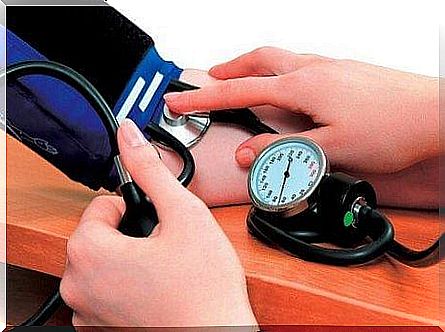Postpartum Preeclampsia: The Causes – Being Parents

Postpartum preeclampsia is one of the most difficult conditions a woman can experience. This is not very common. However, it is necessary to take preventive measures and recognize the symptoms in time to receive the appropriate treatment.
These symptoms can appear right after childbirth and can last between one and three months.
We must first define postpartum preeclampsia as a disease related to high blood pressure, just like preeclampsia during pregnancy.
It is important to stress that this condition must be treated immediately to avoid the risk of cardiovascular problems. We can, among others, mention the damage to blood vessels and veins as well as long-term cardiovascular diseases.
Signs and symptoms of postpartum preeclampsia
- Sudden increases in blood pressure. The threshold of 140/90 (14.9) is exceeded.
- A concentration of more than 300 mg of protein in the urine.
- Sudden and temporary loss of sight. There may also be hypersensitivity to light, weakness, fatigue and altered states of consciousness.
- Sudden and significant weight gain. For example, from 500 grams to one kilo per week following a balanced diet. You may also experience nausea and vomiting.
- Edema of extremities and face.
- Abdominal pain.
- Pain when breathing.

Causes of postpartum preeclampsia
Doctors and scientists have yet to find the definitive cause of this condition. Nevertheless, the most viable explanation is that it occurs in women who have suffered from preeclampsia during their pregnancy, even without knowing it.
Another factor that can promote the onset of the disease concerns the family history of the same disease.
Other risk factors are:
- The rise in blood pressure from the twentieth week of pregnancy.
- Pregnancies that occur before the age of 20 or after 40.
- Obesity or overweight.
- Multiple pregnancies.
Complications associated with postpartum preeclampsia
- This condition has symptoms very similar to preeclampsia. The big difference is that it can lead to seizures and irreversible damage to vital organs, such as the brain or kidneys. In the worst case, it can lead to death or a coma.
- Venous thromboembolism. This disease consists of the simultaneous appearance of two pathologies: venous thrombosis and pulmonary embolism. One experiences difficulty in breathing, chest pain, fever and the inability to lead a normal life.
- Pulmonary edema. This disease seriously affects the respiratory system. There is an accumulation of fluids in the tissues and cavities of the lungs. It can be identified by the expulsion of blood with coughing, anxiety, excessive sweating and difficulty in breathing.
How is it diagnosed and what is the treatment?
- Blood tests. These tests are used to check how well the liver and kidneys are working. It is also checked that the woman has a good platelet count. Platelets are the cells that regulate clotting in the circulatory system and can save life if you bleed.
- Urinalysis. With this type of analysis, the concentration of protein in the urine is determined. An amount greater than 300 mg is a warning signal.

Regarding the treatment of postpartum preeclampsia, it should be noted that, as a rule, it requires medication. Treatment should focus on suppressing seizures, reducing blood pressure, and regulating urine composition.
Now you know how to identify the symptoms of postpartum preeclampsia and the consequences it has if it is ignored. Your body is more vulnerable after the birth of your baby.
This is why it is so important to listen to the signs he is sending you. Your first concern should be your health, so that you can take care of your child and your family.









